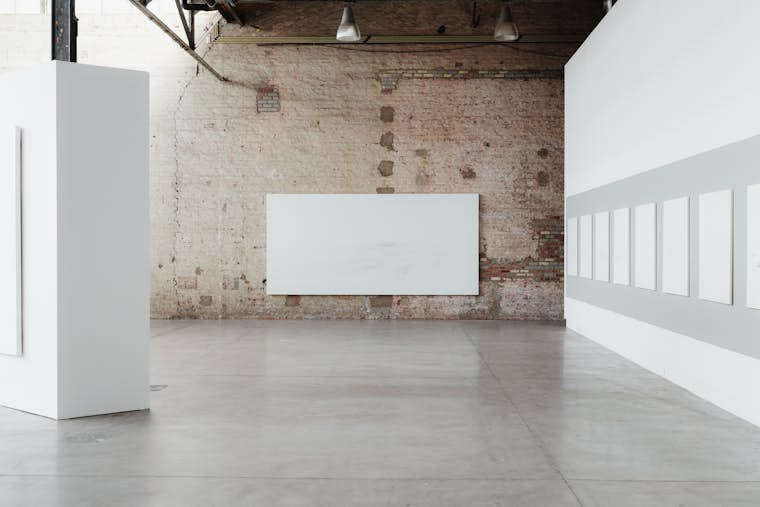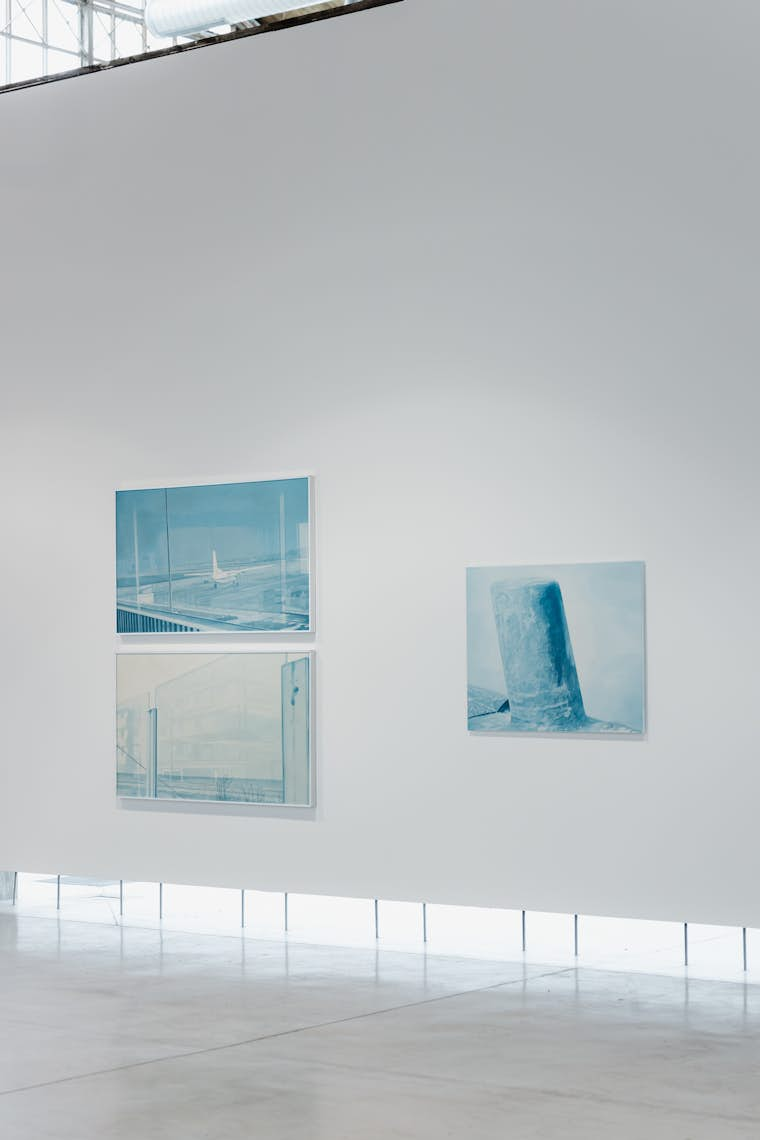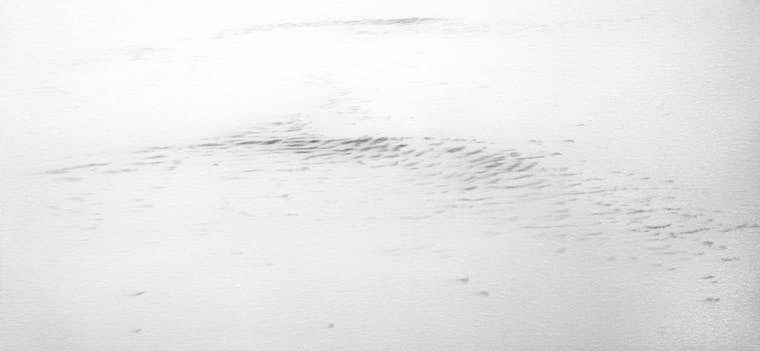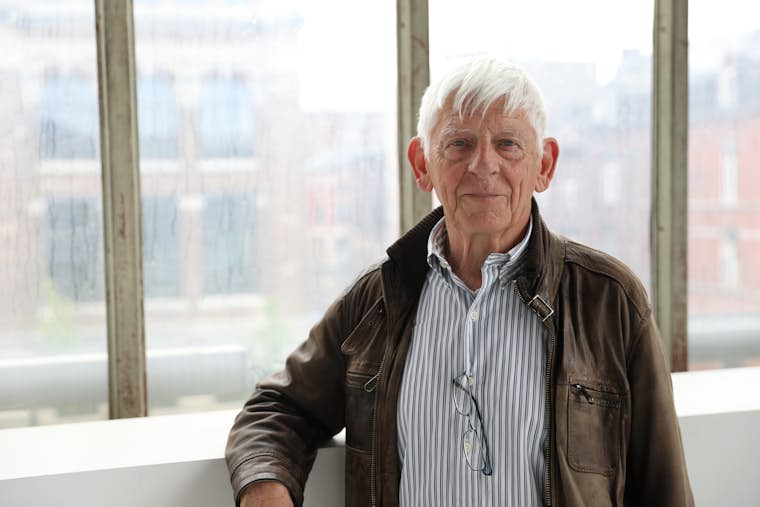In the 1970s, Éric Fourez began producing small paintings inspired by surrealism and literature. Only two of these works survive, bearing witness to an artistic influence that was quickly abandoned and an artistic practice that changed equally rapidly. Finding himself drawn to the photography-based hyper-realism genre, Fourez instantly made his mark with his distinctive light and luminous monochrome blue paintings. His favourite subjects: the waves and views of the North Sea and all they evoke – the elsewhere, travel, escapism. The rocks in Ploumanac’h, motorways, airports, beach huts... and then those first footprints in the sand. In 1984, Fourez’s canvases turned grey, their colour gradually fading until, by 1986, white had become the dominant colour. And the subject a trace, the figuration allusive, at times appearing to dissolve into abstraction.
For Claude Lorent, Fourez’s career is a remarkable one: "Éric Fourez has been tirelessly and resolutely following the very same, unchanging creative process ever since, painting fascinating seascapes, gullied, hollowed out beaches, shaped by the ebb, flow and backwash of the sea, by the power, or gentleness of the waves that come and go, retreat and return, dying on the sand before rising again, more determined and more alive than ever.
A hymn to life and nature, images of destiny, vanities and landscapes, these paintings of infinite whiteness and space, silent and solitary, evoke the passage of time, the fragility of things and beings, the ephemeral and the fight against inevitable obliteration to the point of disappearance. In all sizes and formats, they invite us to look and reflect, to share and delight in the magic of life, to meditate, to become more aware of ourselves, of our earth, which we need to respect, and of the infinite universe.”







